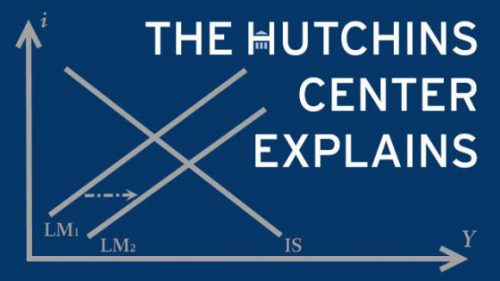The measure known as u* (pronounced you-star), also referred to as the natural rate of unemployment or NAIRU (the non-accelerating inflation rate of unemployment), is the rate of unemployment at which inflation is stable. If unemployment is higher than u*, then there are a lot of people looking for jobs and few job openings, so employers can offer lower wages and wage and price inflation will tend to fall. When unemployment is lower than u*, there are lots of jobs to fill and fewer available workers, so employers raise wages to attract workers, and inflation rises.
The asterisk (*) is the notation that economists use to refer to the projected normal or equilibrium rate of unemployment. The level of u* is greater than zero – that is, there will always be some unemployed people — because, even when jobs are plentiful, some people will be without jobs as they enter the labor force and first look for a job and others will be in the process of switching jobs.
The concept of a natural rate of unemployment was highlighted by Nobel laureate Milton Friedman in his 1968 Presidential Address to the American Economic Association and is closely related to the Phillips Curve, which describes the relationship between inflation and unemployment.
Why does it matter?
The Federal Reserve’s mandate is to aim for maximum sustainable employment and stable inflation around its current target of 2 percent. In deciding what to do with interest rates to meet those objectives, among other things, the Fed compares its forecasts for the unemployment rate and its estimates for u*. If the projected unemployment rate is higher than u*, that’s a reason to cut interest rates or at least not to raise them; if the projected unemployment rate is much lower than u*, that’s a reason to raise interest rates. Of course, there are many other factors that go into decisions on interest rates.
Does the Fed know precisely what the level u* is? Why is it so hard to pin down?
Unemployment and inflation can be measured directly, but u* cannot be. No one can know for sure at what point unemployment has fallen to the point where wages are about to go up. Economists rely on models that relate unemployment and other labor market indicators to inflation in the past to estimate u*. They also examine detailed labor market data other than the unemployment rate–such as the number of job vacancies, the fraction or workers who are working part-time but who would prefer full-time jobs, the intensity with which employers are recruiting–to calibrate ways in which today’s economy – and thus estimates of u* — differ from the past.
But these estimates are always uncertain – and more so lately because the link between unemployment and inflation appears weaker now than it has been in the past. The rise in unemployment during the 2008-9 financial crisis did not lead to the expected sizable and persistent decline in inflation. And the recent decline in the unemployment rate to a 50-year low hasn’t triggered a dramatic surge in inflation.
Fed Chair Jerome Powell emphasized this point in an August 2018 speech at the annual Jackson Hole conference:
“Navigating by the stars [referring to measures like u*] can sound straightforward. Guiding policy by the stars in practice, however, has been quite challenging of late because our best assessments of the location of the stars have been changing significantly.”
What causes u* to change? And how has it changed over time?
The level of u* is not fixed. It changes over time, driven by changes in labor laws, the minimum wage, government benefit programs, demographics and technology. For instance, u* might decline if workers, on average, are older; older workers are less likely to be unemployed. The level of u* might rise if unemployment benefits become more generous and this leads unemployed workers to be more picky about taking jobs.

Most estimates suggest that u* has declined since the 1980s, and is now somewhere around 4.5 percent. The Congressional Budget Office puts it at 4.6 percent. The latest projections from Federal Reserve policymakers puts it between 4.2 percent and 4.5 percent. A recent estimate by Richard Crump, a New York Fed economist, Marc Giannoni, a Federal Reserve Bank of Dallas economist, and Stefano Eusepi and Ayşegül Şahin of the University of Texas at Austin put it at 4.1 percent.
The Brookings Institution is committed to quality, independence, and impact.
We are supported by a diverse array of funders. In line with our values and policies, each Brookings publication represents the sole views of its author(s).







Commentary
What is u*?
March 6, 2019